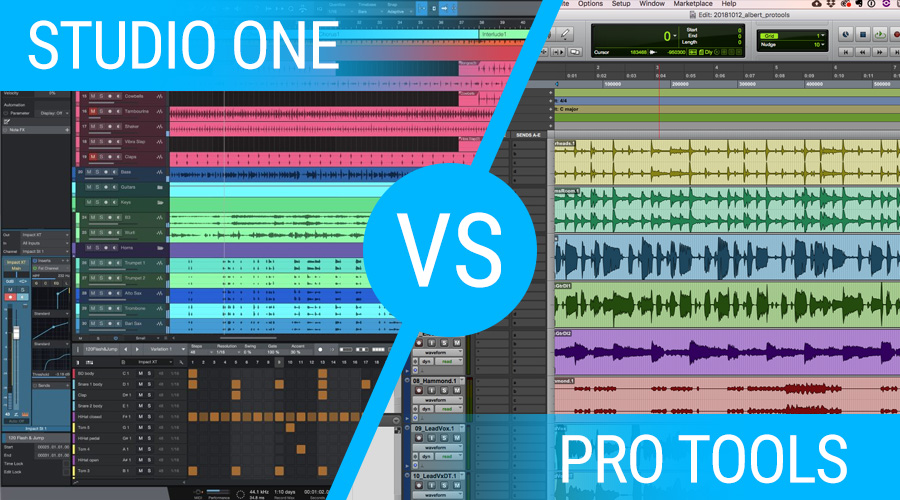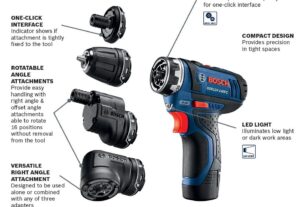Are you a music producer or an audio engineer looking to find the best digital audio workstation (DAW) for your projects? Look no further than Studio One and Pro Tools, two of the most popular and powerful DAWs on the market today. In this article, we’ll take a deep dive into both software options to help you determine which one is best suited for your music production needs.
First, let’s take a closer look at each DAW.
Studio One
Studio One is a DAW developed by PreSonus, a company known for its high-quality audio equipment. It is well-regarded in the music production community for its intuitive interface and ease of use. Studio One has been gaining popularity over the years as a serious contender to other popular DAWs such as Logic Pro and Ableton Live.
Pro Tools
Pro Tools is a DAW developed by Avid Technology, Inc. It has been around since the 1980s and has become an industry standard in recording studios around the world. Pro Tools is renowned for its advanced editing capabilities and powerful mixing tools, making it a go-to choice for many professional audio engineers.
Now that we’ve covered the basics let’s dive into some more specific aspects of each DAW.
User Interface
One of the most noticeable differences between Studio One and Pro Tools is their user interfaces. Studio One has a modern design with drag-and-drop functionality that makes it easy to navigate through various windows quickly. The interface is customizable, allowing users to adjust it to their preferences.
On the other hand, Pro Tools has a more traditional interface with complex menus and buttons. While this may seem overwhelming at first glance, it allows for more precise control over every aspect of your project. Additionally, its layout can be customized to suit your workflow.
Audio Recording and Editing
When it comes to audio recording and editing capabilities, both DAWs offer a wide range of features. However, Pro Tools has been the industry standard for decades and continues to be the gold standard for professional-grade audio editing.
Pro Tools allows users to edit audio with surgical precision, including individual notes in a recorded performance. It also offers advanced automation tools that make mixing much more manageable.
Studio One’s editing capabilities are just as impressive, although they may not be as advanced as those found in Pro Tools. Its drag-and-drop functionality makes it easy to arrange audio clips on the timeline while still offering powerful automation features.
Virtual Instruments and Plug-ins
Both Studio One and Pro Tools come loaded with virtual instruments and plug-ins that can be used to create a wide range of sounds. Studio One includes a vast library of virtual instruments and loops, making it an excellent choice for producers looking for inspiration.
Pro Tools also offers an array of virtual instruments and effects plugins, but its main strength lies in its compatibility with third-party plugins. This gives users access to a vast library of high-quality plugins from some of the biggest names in the industry.
Compatibility
One significant advantage of Pro Tools is its compatibility with other Avid products such as Media Composer and Sibelius. This integration makes it easy to import and export files between different programs without losing quality or data.
Studio One is compatible with most popular file types, but it does not have the same level of integration with other software as Pro Tools. However, this doesn’t mean that Studio One isn’t capable of handling complex projects; it’s merely a matter of personal preference.
Price
Finally, let’s talk about price. Both Studio One and Pro Tools offer various pricing options depending on your needs. Studio One has three versions: Prime (free), Artist ($99), and Professional ($399). Each version adds additional features to the previous one, so you can choose which one suits your needs best.
Pro Tools has a similar pricing structure, with different versions tailored to specific needs. Pro Tools First (free), Pro Tools ($29.99/month or $299/year), and Pro Tools Ultimate ($79.99/month or $799/year) offer various features depending on your budget and requirements.
Conclusion
In conclusion, both Studio One and Pro Tools are powerful DAWs that offer unique advantages for music production. Studio One is an excellent choice for those looking for an intuitive interface and easy-to-use automation tools, while Pro Tools is the go-to option for professional audio engineers who need precise control over every aspect of their projects.
Ultimately, the decision between these two DAWs comes down to personal preference and workflow. Both have their strengths and weaknesses, so it’s essential to consider what you need from a DAW before making a final decision.
References:
https://www.presonus.com/products/Studio-One/whats-new
https://www.avid.com/pro-tools
https://www.musicradar.com/reviews/studio-one-5-professional




